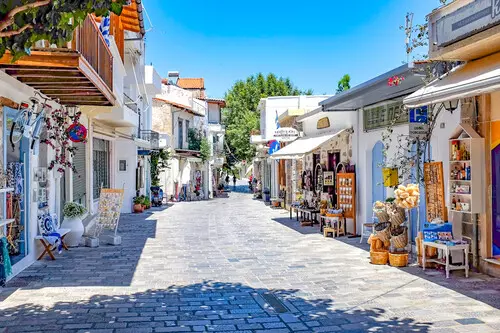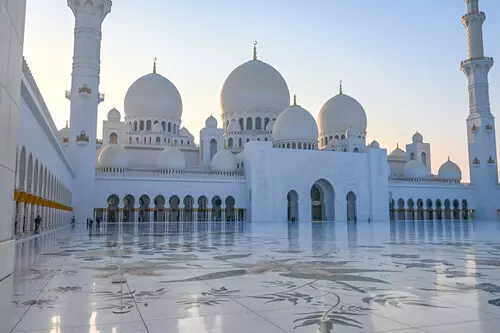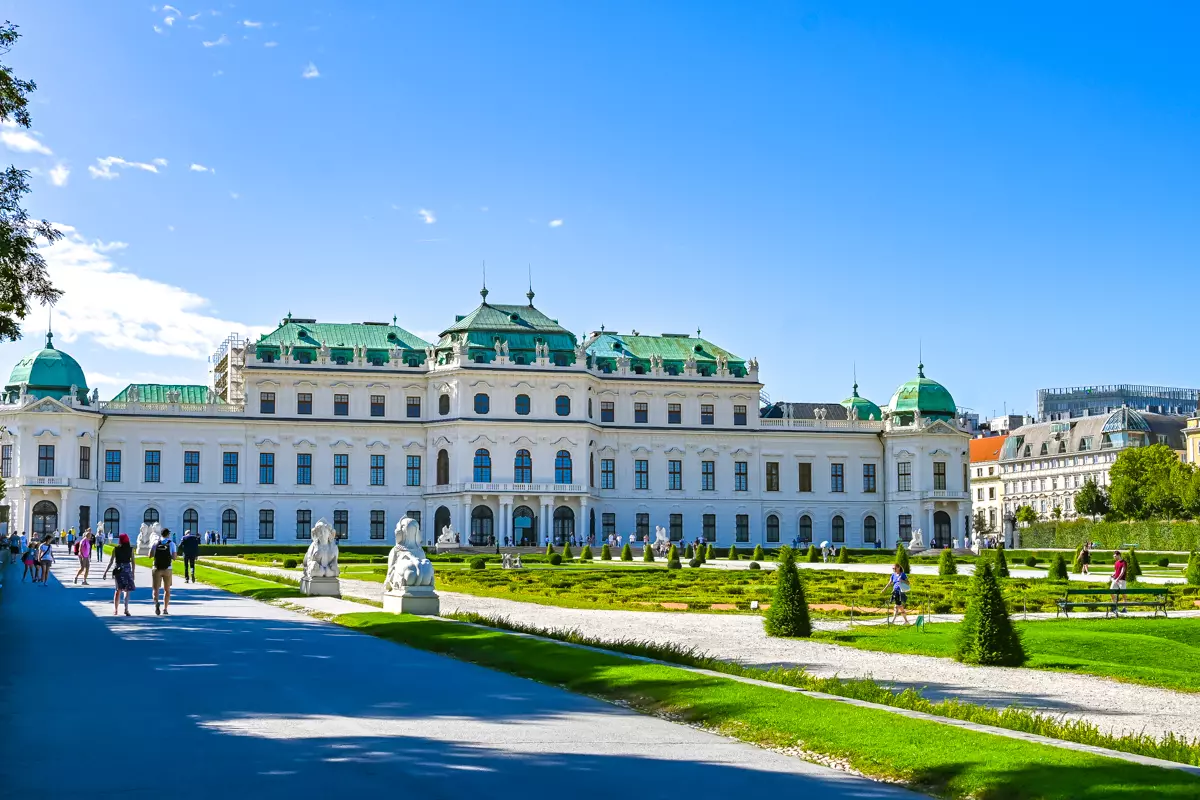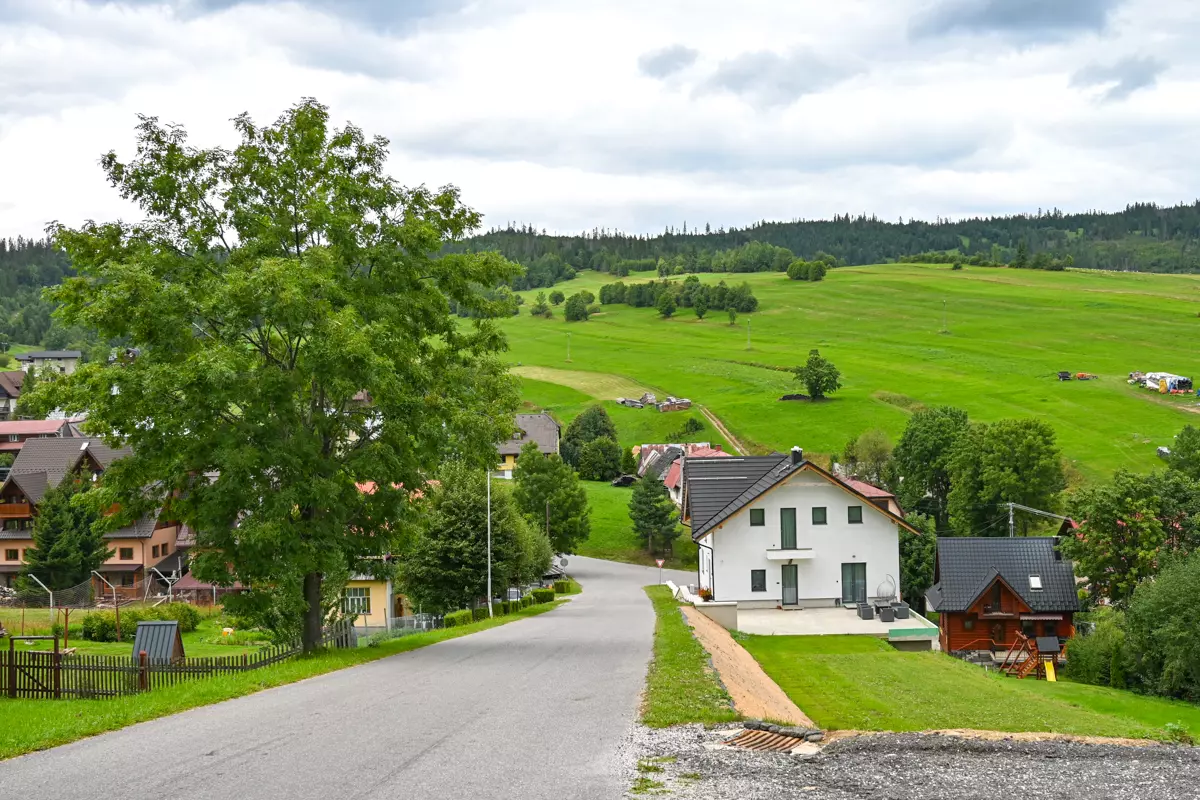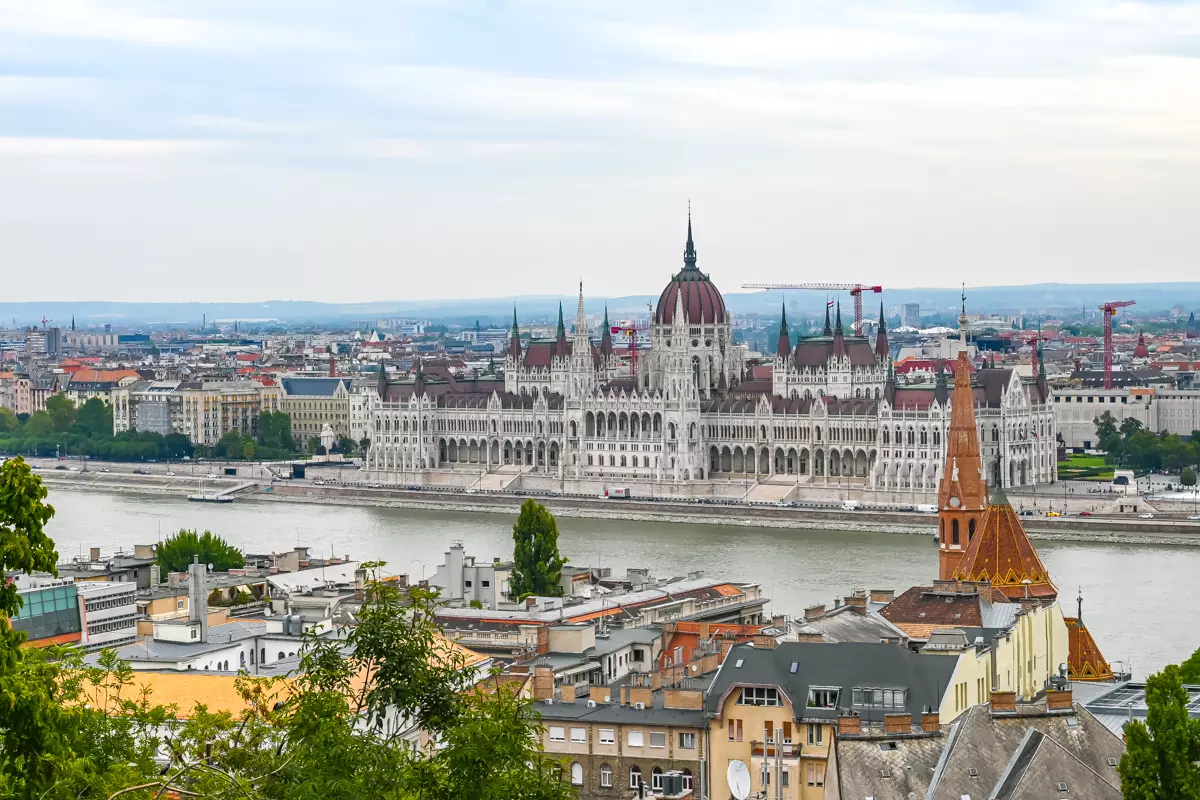My Visit To Hundertwasserhaus & Hundertwasser Village
In Vienna’s Landstrasse district, you’ll find a completely different side of the city – colorful, irregular, and in sharp contrast to the baroque palaces and the imperial legacy. Here are the most famous works of the artist Friedensreich Hundertwasser. The residential building Hundertwasserhaus, the Hundertwasser Village located just opposite, and the Kunst Haus Wien museum only a few minutes away.
When I first came here, I was surprised by the uneven floors, the bright colors, and the trees growing on the balconies. The whole building looked more like an art installation than ordinary architecture.
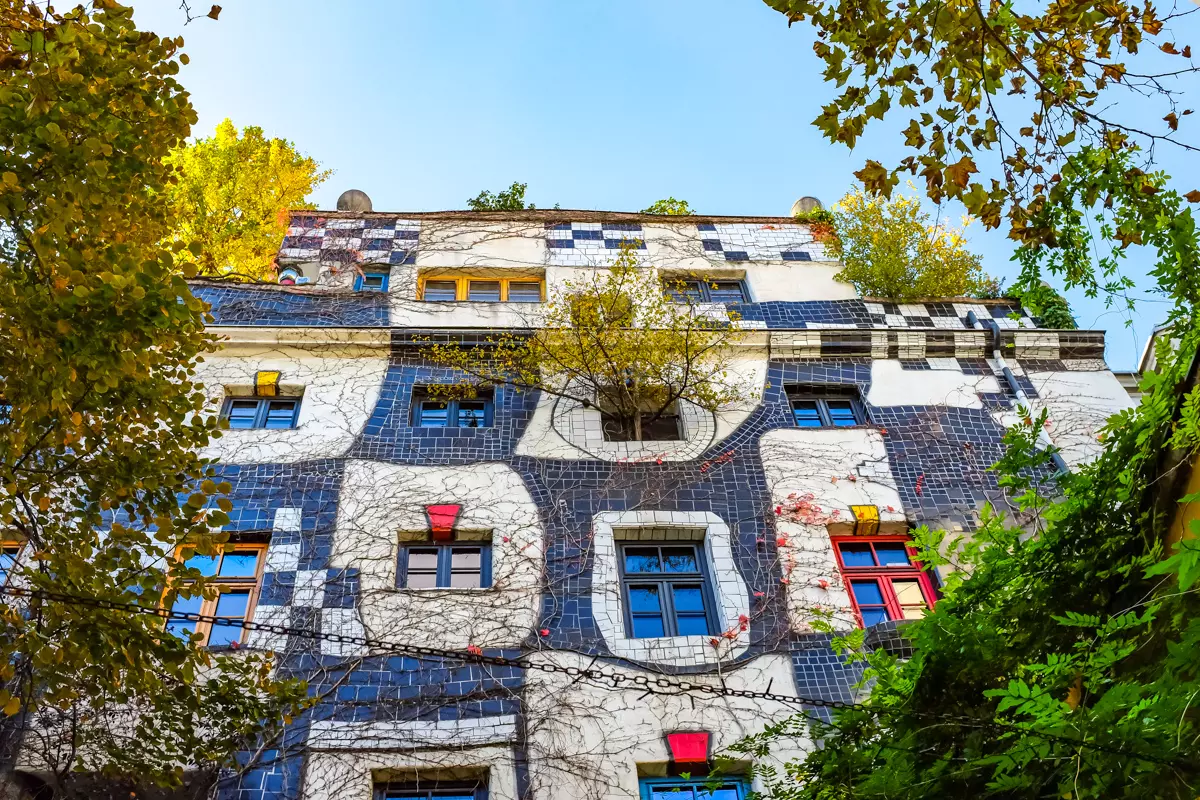
Who Was Friedensreich Hundertwasser
Friedensreich Hundertwasser ranks among the most fascinating artists and architects of the 20th century. His instantly recognizable work rejects straight lines and gray walls, which he believed suffocated human imagination. Instead, he created colorful, vibrant spaces deeply connected to nature. Many of his buildings seem to grow organically from the ground, with trees on balconies, wavy floors, and irregular shapes.
At the core of Hundertwasser’s philosophy stood the bond between people and nature. Roofs turned into gardens, and every resident could freely decorate their own windows as a personal space. This approach directly challenged official modernism and, at the same time, captivated thousands of admirers.
Vienna showcases the largest collection of his creations: the iconic Hundertwasserhaus, the nearby Hundertwasser Village, the Kunst Haus Wien museum, and the vibrant Spittelau heating plant.
In Austria beyond Vienna, you can find other Hundertwasser works, including the Rogner Bad Blumau Spa Resort and the colorful St. Barbara Church in Bärnbach, Styria.
Germany carries a strong imprint of his vision as well. The Waldspirale residential complex in Darmstadt, the Green Citadel in Magdeburg, the Train Station in Uelzen, and even a unique McDonald’s in Essen still attract curious visitors.
Outside Europe, one of his most famous creations is the public toilets in Kawakawa, New Zealand, which have become a true tourist magnet. In Japan, the Maishima Incineration Plant in Osaka stands out like a colorful castle rather than an industrial site.
Hundertwasser’s legacy stretches across the world. It represents not only a Viennese phenomenon but also a global reminder of how art can transform even the most ordinary spaces.
What To See In Hundertwasser’s World
When I visited the Landstrasse district, I quickly realized that this is a real Hundertwasser corner, and it felt like a true relief after the noise of Vienna and the large crowds of tourists.
In this small area, everything is located so close together that in just a few hours you can get a pretty clear impression of the artist’s work. There are four main highlights in Vienna – Hundertwasserhaus, Hundertwasser Village, the Kunst Haus Wien museum, and the Spittelau heating plant located a bit farther away.
Hundertwasserhaus
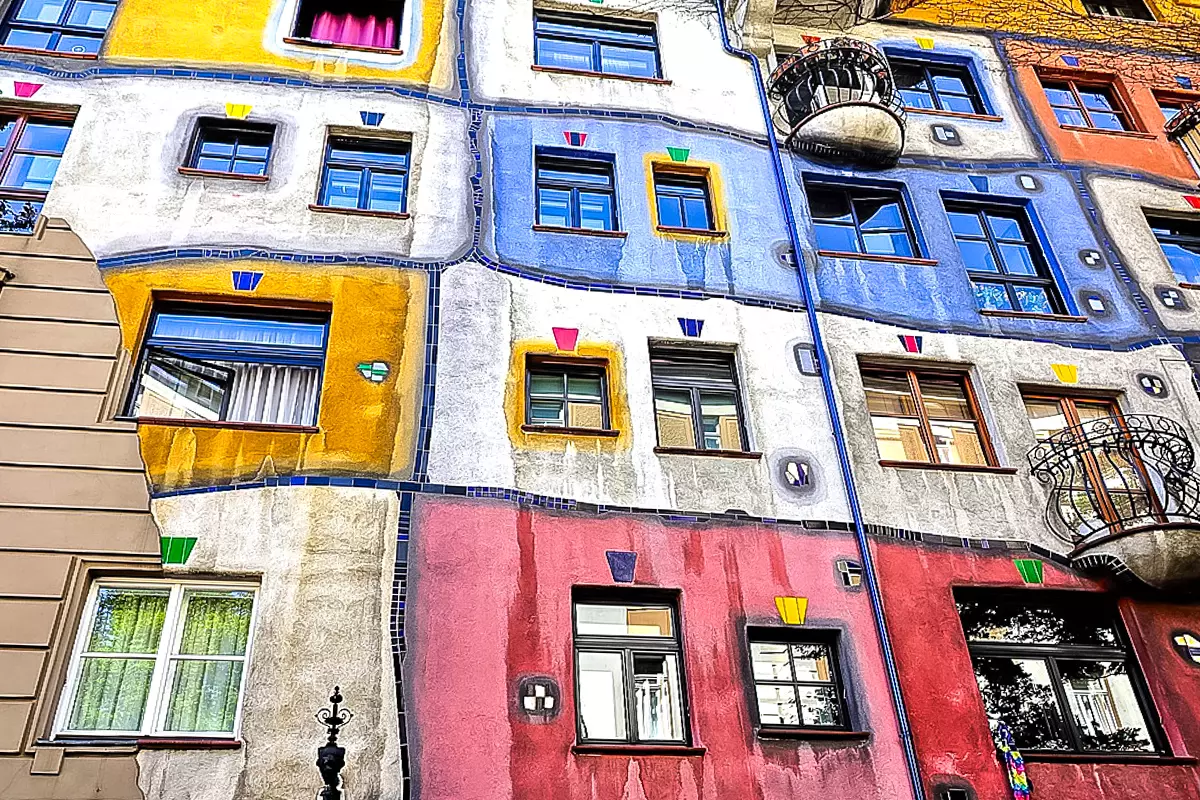
I have no doubt that when you see Hundertwasserhaus for the first time, you will immediately understand why the building has become such an attraction in Vienna. Its colorful facade, irregular lines, and balconies of various shapes with trees growing out of them are mesmerizing. It looks as if the building was born from imagination rather than designed on architects’ blueprints.
Interestingly, this house was built between 1983 and 1985, and people still live in it today. This means it is not a museum, but a real apartment building, so visitors can only look at it from the outside. But it is exactly this everyday life that gives the building its charm. As you walk around, you realize that this is not an exhibit but a real space where art and life merge into one.
Another fun fact is that Hundertwasser refused to accept any fee for his project. What mattered most to him was that the house was built according to his vision. For this reason, the building is considered not only a piece of architecture but also a manifesto of artistic philosophy.
Hundertwasser Village
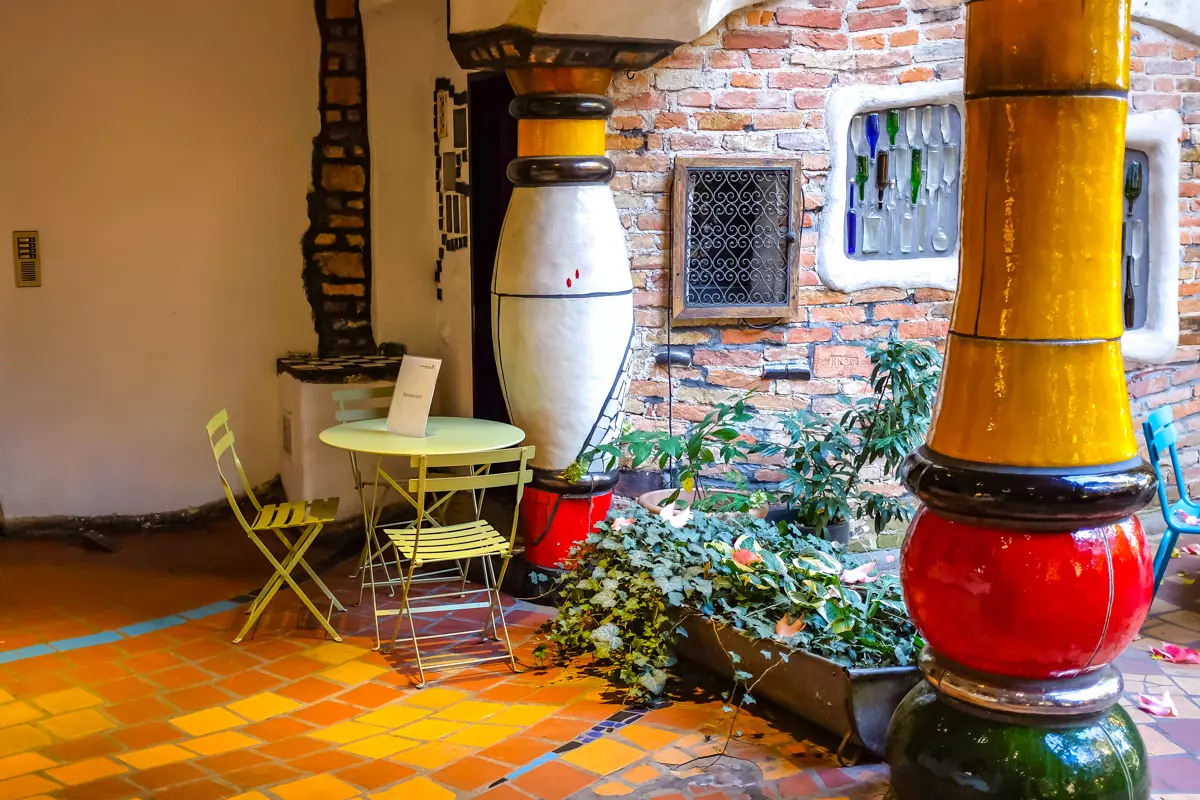
Directly opposite Hundertwasserhaus, Hundertwasser Village continues the artist’s vision. The residential house shows his ideas from the outside, while the Village lets you step inside them.
The artist transformed the building into a small world where you can wander freely, browse galleries and little shops, or sit down for a coffee. Uneven floors, colorful walls, and playful details create an unusual, almost fairy-tale atmosphere. Walking through feels like entering a fantasy where rules and straight lines simply don’t exist.
Hundertwasser designed the Village as a small laboratory of his art — a place to enjoy color, architecture, and unique surprises at every corner.
Kunst Haus Wien Museum
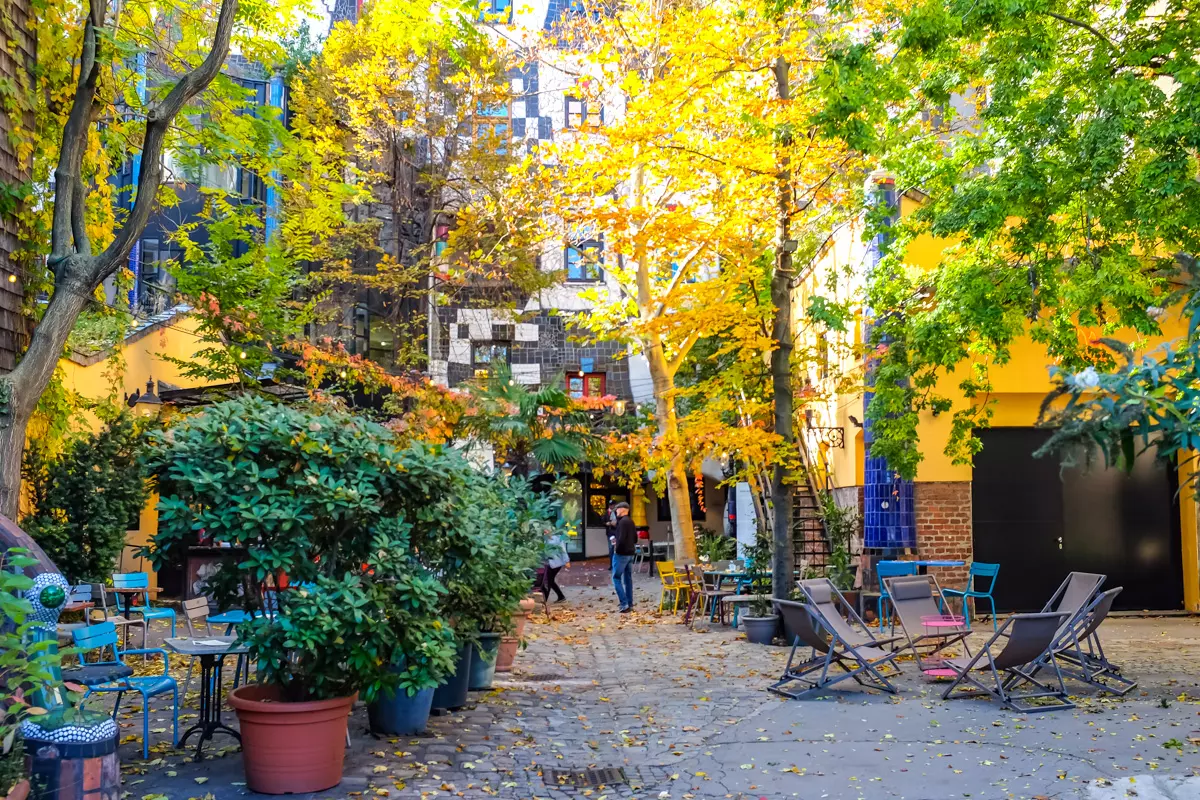
Just a few minutes’ walk from Hundertwasserhaus lies another important spot – the Kunst Haus Wien museum. The building, like all of Hundertwasser’s works, immediately stands out with its black-and-white tiles, irregular shapes, green terraces, and strong contrasts of color. It is not only an exhibition space but also another architectural creation of the artist.
Inside, there is a permanent exhibition dedicated to Hundertwasser himself – from his early paintings to his later projects. Here you can understand how he thought about the relationship between humans and nature, why he so persistently avoided straight lines, and how the idea of giving homes more life was born.
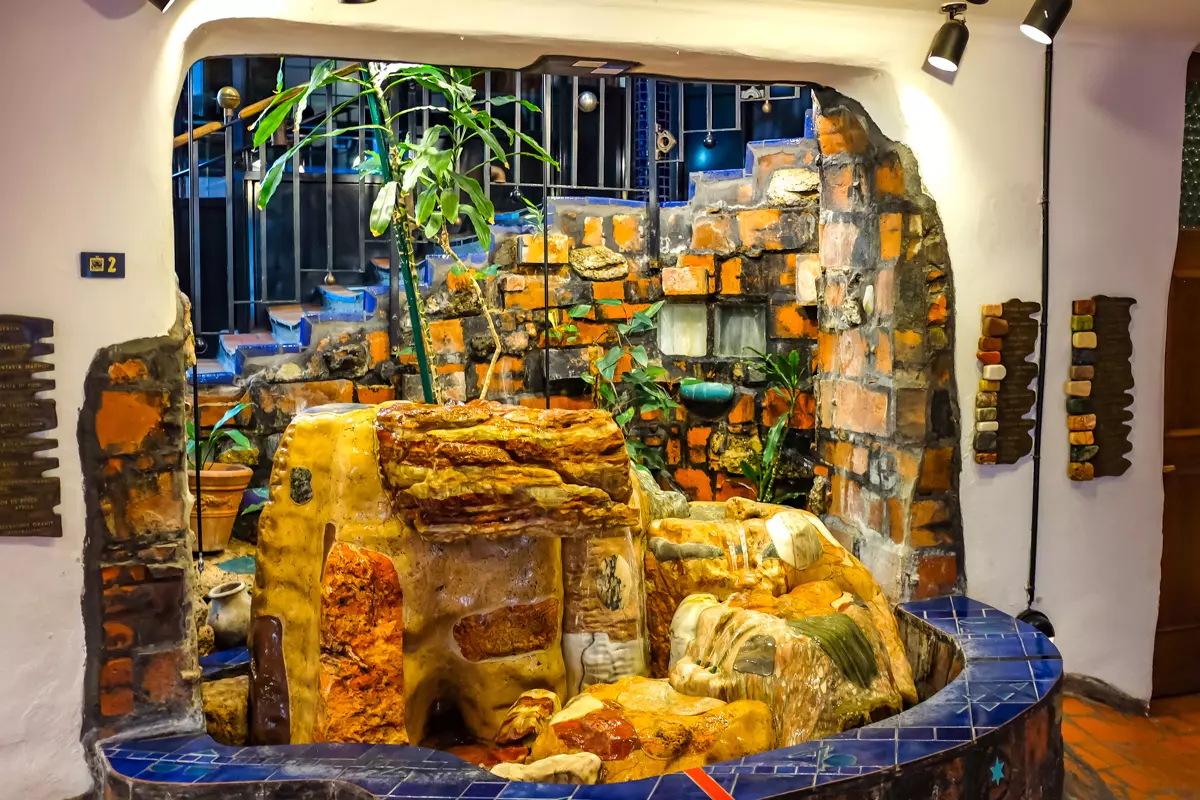
In addition to the paintings and projects, the museum is full of elements characteristic of Hundertwasser – colorful columns, mosaics, unexpectedly curved walls, sculptural details.
The museum courtyard cafe struck me as the most colorful in the whole district, so I spent an hour there over a cup of coffee, simply enjoying the bright autumn colors.
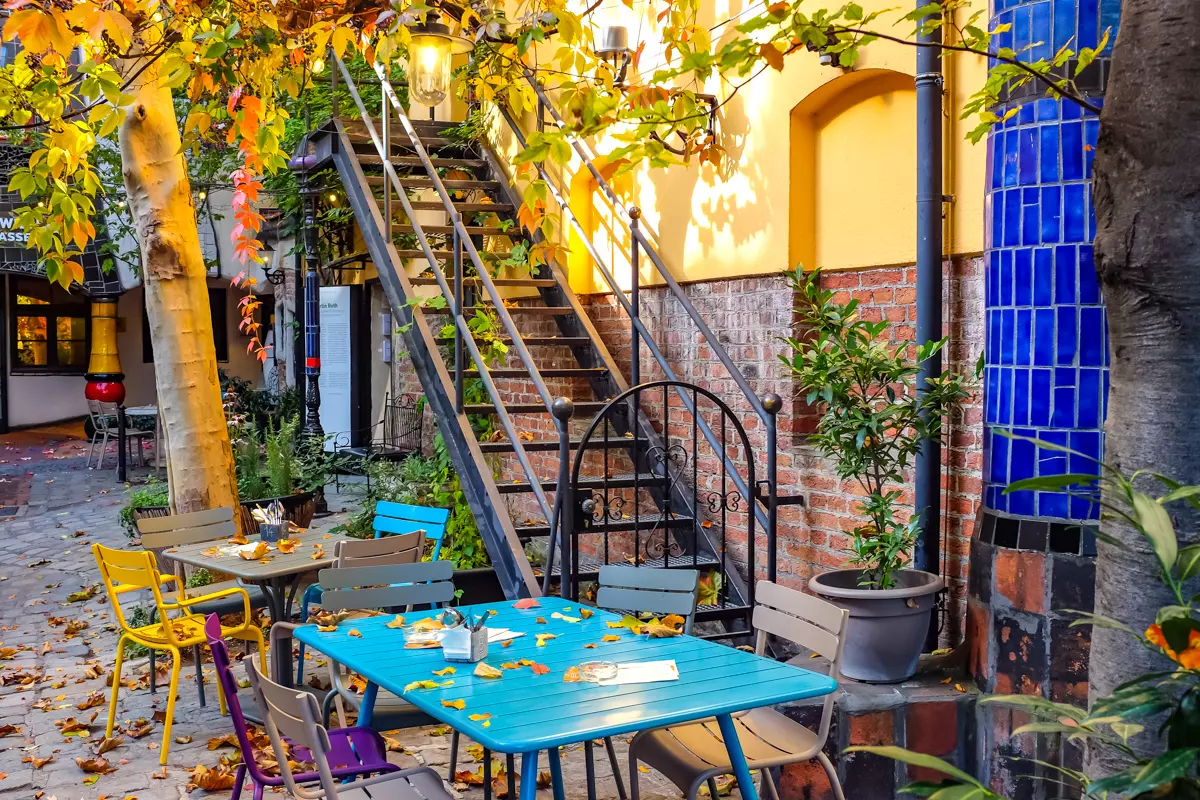
Tickets: Book your Kunst Haus Museum entry here.
Spittelau Heating Plant
Although the Spittelau heating plant is not in the Landstrasse district, it’s another Hundertwasser landmark in Vienna, redesigned by the artist in the 1980s. It ranks among the city’s largest heating plants, yet at first glance it feels more like a colorful fantasy world than an industrial site.
Bright mosaics, asymmetrical shapes, and a golden sphere crowning the tall chimney turn the building into a striking landmark. The project shows how Hundertwasser’s style could transform functional industrial architecture and give it a completely new character.
Where To Eat Near Hundertwasserhaus
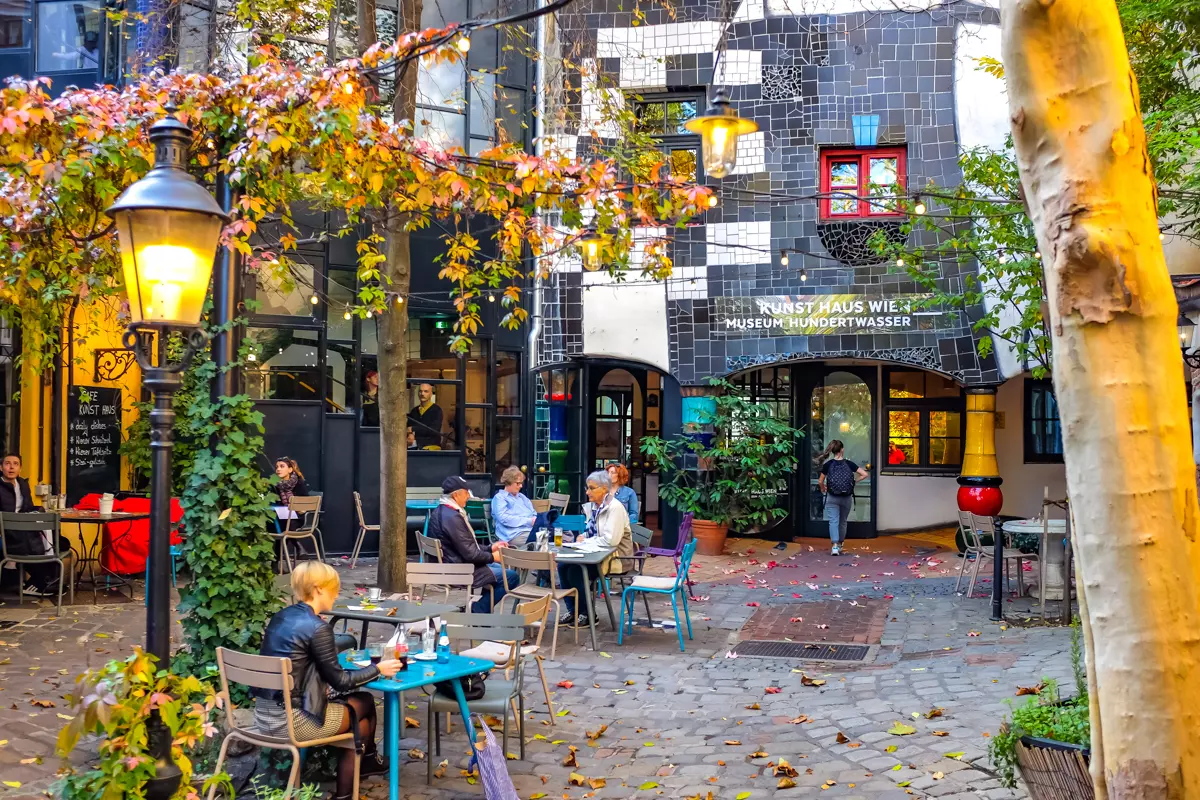
If you plan to spend more time in the area, it’s worth thinking about where to eat. The Kunst Haus Wien museum has its own cafe, good for both lunch and dessert. Nearby you’ll also find the Italian restaurant Masaniello, appreciated by locals for its authentic pizzas and pasta. And if you’re in the mood for something refreshing, I recommend stopping by Ramelle Eis Homemade Natural Ice Cream – a small shop offering natural, handmade, and delicious ice cream.
How To Get To Hundertwasserhaus
Hundertwasserhaus and Hundertwasser Village are located in the Landstrasse district (the 3rd district), not far from the city center. They are easy to reach either by public transport or on foot.
- On foot: from Stephansplatz in the old town, it’s about a 30-minute walk. It’s a pleasant route that takes you through the central part of the city.
- By metro: the closest stations are Wien Mitte-Landstraße and Rochusgasse (U3 and U4 lines). From there, it’s about a 10-minute walk to Hundertwasserhaus.
- By tram: get off at Hetzgasse (tram No. 1). From the stop, it’s just a few hundred meters on foot.
- By bus: several routes pass nearby, but the 4A is probably the best option, as it stops right next to the attractions at Rasumofskygasse.
Since the location is fairly close to the center, I walked there and then returned by public transport. That way I also had the chance to see more of Vienna along the way.
Discover: Top Cruises & Boat Tours in Vienna.
When To Visit & How Long To Stay
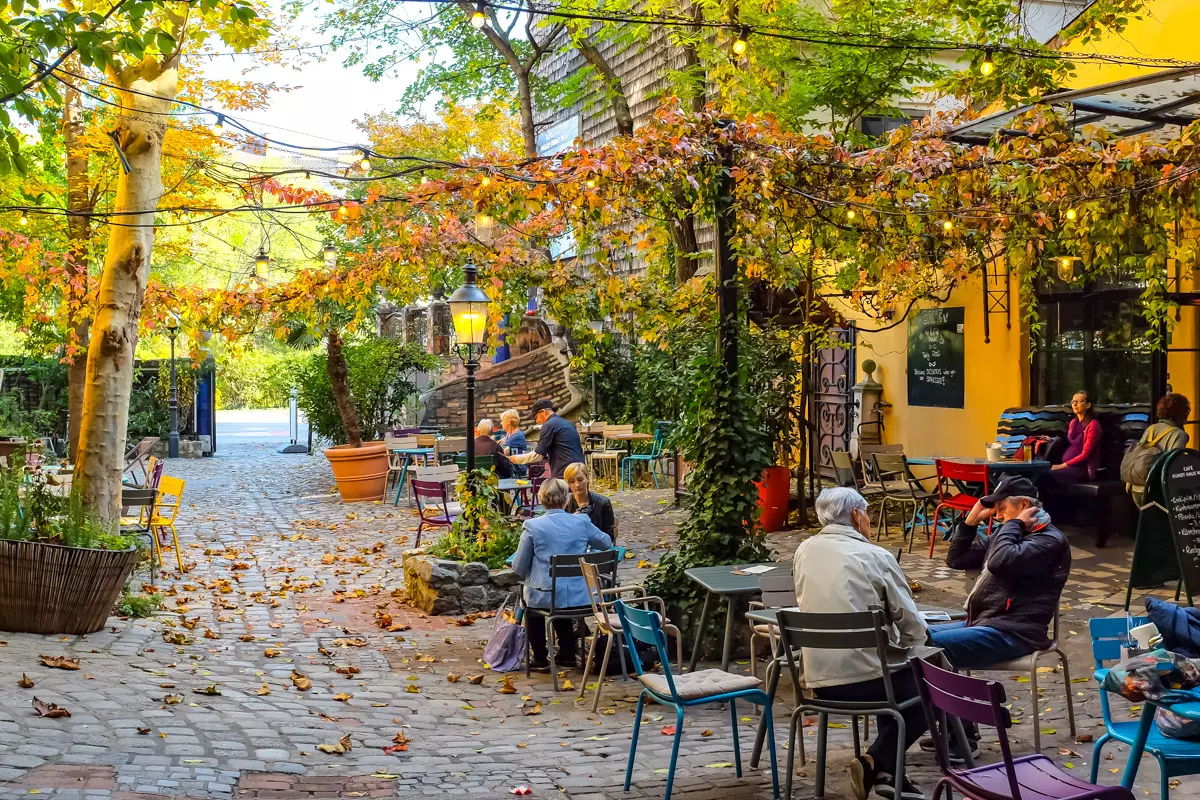
Hundertwasserhaus and the surrounding sites are popular attractions, so you’ll almost always find people here. If you prefer a quieter atmosphere, I suggest coming in the morning or on a weekday. On weekends and during the summer season, the area can get crowded with tourists, making it noisy and harder to capture a good photo.
The visit itself doesn’t take long – you can see the house in about 15–20 minutes. If you also stop at Hundertwasser Village and the Kunst Haus Wien museum, plan to spend around 2–3 hours in total.
Also read: How To Get To Schönbrunn Palace In Vienna
FAQs Hundertwasser Village & Hundertwasserhaus
No, it is a residential building, so entry is not allowed. The building can only be viewed from the outside.
It is the building opposite Hundertwasserhaus, transformed into galleries, small shops, and a cafe. Entrance is free.
Visiting Hundertwasserhaus and Hundertwasser Village is free of charge. The only paid attraction is the Kunst Haus Wien museum, with tickets costing €15. You can easily buy them online here.
In the morning or on weekdays, when there are fewer tourists. On weekends and in the summer, the area gets crowded.
Yes, because it is one of the city’s most unique landmarks. Even a short 30-minute stop leaves an impression and shows you a completely different side of Vienna.
Book your flight
For the best flight deals, I always rely on Skyscanner. Features like Multi-city and Explore Everywhere help me uncover incredible travel opportunities.
Rent a car
Discovercars is my top choice for comparing car rental prices for any road trip around the world. The booking experience is always smooth and easy.
Travel insurance
SafetyWing provides affordable travel medical insurance with global coverage, perfect for digital nomads and long-term travelers.
Book Tours & Attractions
Experiencing a destination to the fullest is easier with a well-planned itinerary. I use GetYourGuide for guided tours and Tiqets for quick access to museum and amusement park tickets.
Protect yourself online by VPN
No matter where I go, I always use NordVPN for secure browsing and to ensure I can access websites that might be blocked in certain countries.
Disclosure: I only suggest companies that I personally rely on. If you use the affiliate links in my posts to book services, I’ll earn a small commission, with no extra cost to you.
Have you been to Hundertwasserhaus and Hundertwasser Village in Vienna? Share your impressions below!
Share on

Hi, my name is Marius, and I’m driven by a desire to explore the hidden corners of the world. Less-traveled destinations like Saudi Arabia, Kazakhstan, and Mongolia fascinate me with their authentic cultures and untouched landscapes. For me, every trip is an opportunity to challenge myself, meet new people, and create memories that last a lifetime.
